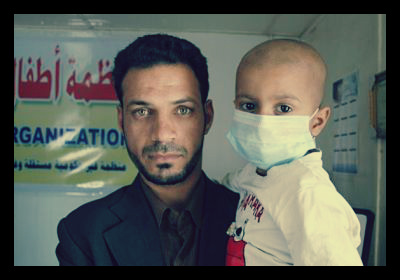Cancer Crisis in Iraq

The war in Iraq is finally over – new leadership is in place and the country has begun to rebuild. But the effects of the Iraq War continue to have a deadly impact. Contamination from depleted uranium used in U.S. munitions has resulted in an increase of cancer and birth complications throughout the region.
Toxic waste, as well as radiation from U.S. bombings, still linger in the war-ravaged nation. Chris Busby, author of “Cancer, Infant Mortality and Birth Sex-Ration in Fallujah, Iraq 2005-2009,” says Iraq’s medical records show “the highest rate of genetic damage in any population ever studied.”
There has been a startlingly rise in premature births, infertility and congenital birth defects. Doctors report children born with tumors, deformities, multiple limbs and underdeveloped nervous systems. Mothers sometimes do not survive through the delivery process due to unexpected complications. Most babies born with these extreme abnormalities do not survive. Dr. Alani, who has been studying the effects of radiation in Iraq, reports that 14.7 percent of all babies born in Fallujah have birth defects. In post-atomic bomb Hiroshima and Nagasaki, the birth defect rate was about 2 percent.
Exposure to lead and mercury during the 1991 bombings and the 2003 invasion have also led to increased cancer rates. Busby reports that childhood cancer in Fallujah, Iraq is 12 times higher since the heavy bombing started around 2004. Basra University reports that leukemia in children has increased by 22 percent, and the number of patients with breast cancer has increased 19 percent since the 2004 invasion. Cancer is now the leading cause of death in southern Iraq, according to a report published by the Basra University Medical College.
So far, the United States has refused to acknowledge the damage caused by its chemical weapons. No compensation or assistance has been provided for Iraq, similar to refusals to clean up Agent Orange after the Vietnam War.
The medical impact of war will not go away any time soon. When depleted uranium bombs explode, they produce a fine dust containing uranium. The uranium is absorbed by plants, contaminating the food and water supply. To make matters worse, Iraq’s infamous sandstorms can also stir up the uranium, making the contaminants airborne. It will be 4,000 years before the depleted uranium will decay to a safe level.
– Stephanie Lamm
Sources: Al Jazeera, Fire Dog Lake
Photo: Inter Press Service
